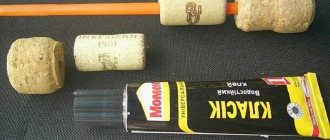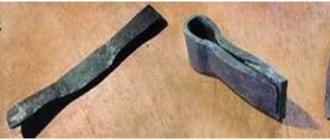Handmade device
The cheapest option would be a hand-made ice fishing pole. It consists of the following components:
- a wooden handle in the form of a strong handle, which has at its end a comfortable handle with a rope for a more durable fixation to the hand;
- The metal tip can be sharpened thick reinforcement, a crowbar tip, or an old file.
If the technical parameters are observed, such a product will not be inferior to the factory analogue, and due to some factors it may have a significant advantage. They can test the thickness of the ice or punch a hole of the required size.
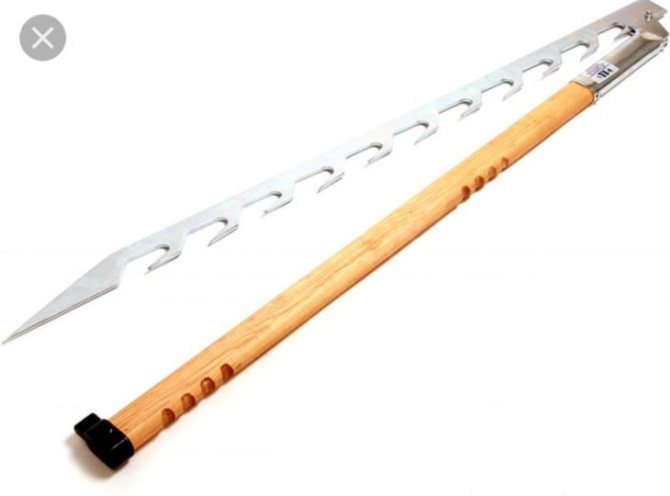
The ice pick is most effective when the ice thickness is 7-15 cm.
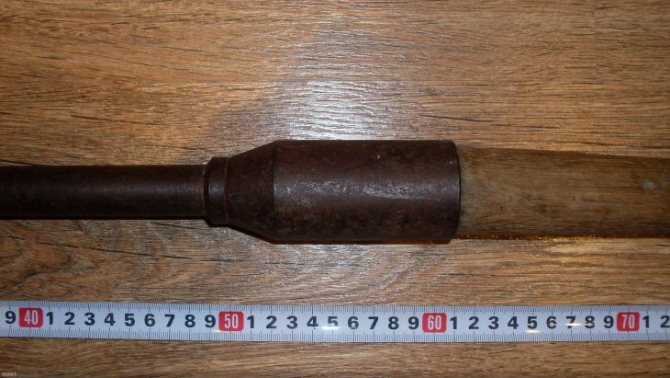
The purpose of the pick
The main purpose of the pick is to break through ice. For a person going out onto a frozen body of water, an ice pick will help him cope with a number of tasks:
- Ensure fisher safety. The ice pick does an excellent job as an ice strength tester. If one blow is enough to get to the water, it is dangerous to move further. This becomes especially important when the reservoir is covered with the first unreliable ice crust or during a prolonged thaw. At the end of the season, the threat of swimming in cold water also increases. The ice layer becomes uneven, thins and is greatly washed away . The ice pick allows you to find a safe path on a body of water, and if the fisherman does fall through the ice, it will help him stay on the surface. To do this, you need to place the pick across the gap, firmly grasp the handle and call for help;
- Set up networks. When commercially fishing in winter, it is necessary to make wide ice holes. If the ice thickness is less than 30 cm, then an ice pick can easily cope with this task. To check the nets, ice holes that have frozen over several days are also opened using an ice pick.
- Catch big fish. Holes for catching predators on girders are mainly drilled with a drill. But the frozen fishing line is freed with the help of an ice pick, which copes with this task very delicately. In addition, it becomes simply irreplaceable if the fish is so large that it cannot fit into the drilled hole. With just a few precise blows of sharpened steel, you can widen the opening to the desired size and not miss the long-awaited catch.
- Look for fish. When the ice is not very thick and there is a need to constantly move around a body of water, for example in search of perch, an ice pick will save time and quickly make small holes.
- Get bait. Many fishermen prefer to wash fresh bloodworms themselves. To ensure that sludge can be lifted from the bottom, the hole must be wide and large enough. For this purpose, the pick is better suited than any other tool.
Each fisherman may have a whole series of private problems and tasks that an ice pick will help him cope with.
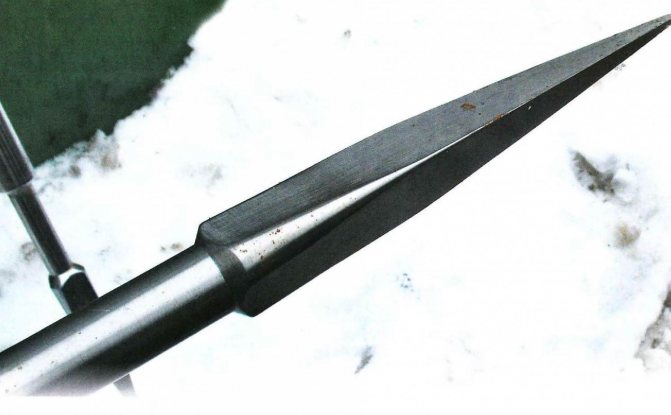
Blueprints
Before starting production, you need to prepare a drawing of an ice pick for winter fishing. It is important to consider the following parameters:
- the height of the finished product must correspond to the level of the human shoulder joint;
- the pointed tip is approximately 30 cm long;
- The tip is attached to the handle using a special glass 10 cm high.
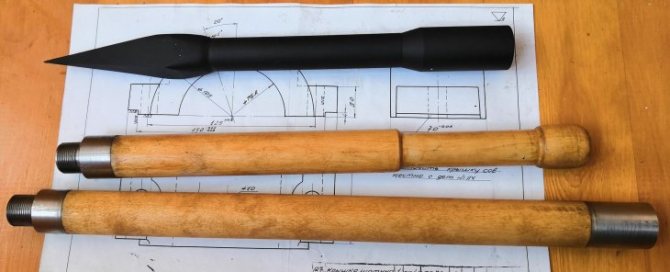
This principle produces a quality product. Depending on the shape of the tip, it has different purposes.
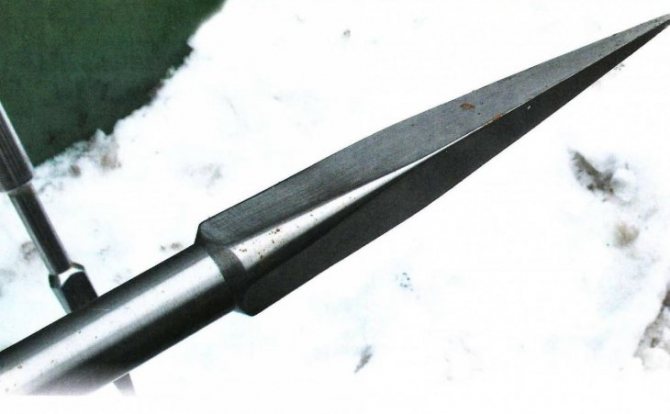
Features of the finished product
Before you make an ice pick for winter fishing, you need to decide for what purpose it will be used.
- wedge-shaped - gives an advantage when making a hole that tapers at the bottom;
- a chisel-shaped point allows you to make holes with vertical walls;
- triangular peaks penetrate dry ice well in severe frosts;
- a tip in the form of a spatula or chisel allows you to break off large blocks of ice.
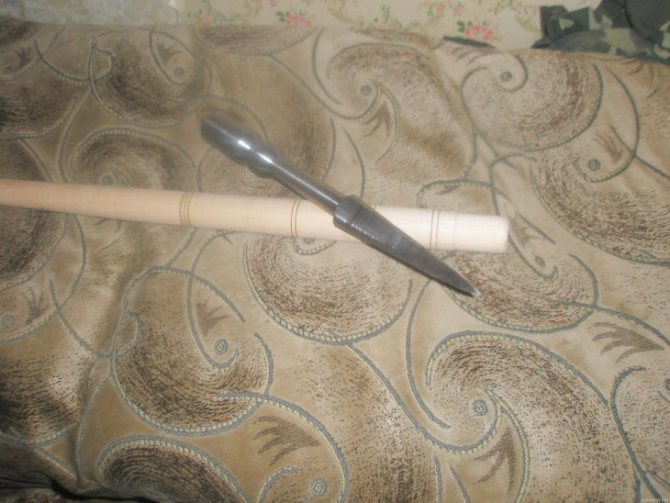
There are lightweight products weighing approximately 2.5 kg, used on ice 15 cm thick. Heavier items weighing up to 4.5 kg are available for thicker ice coverings.
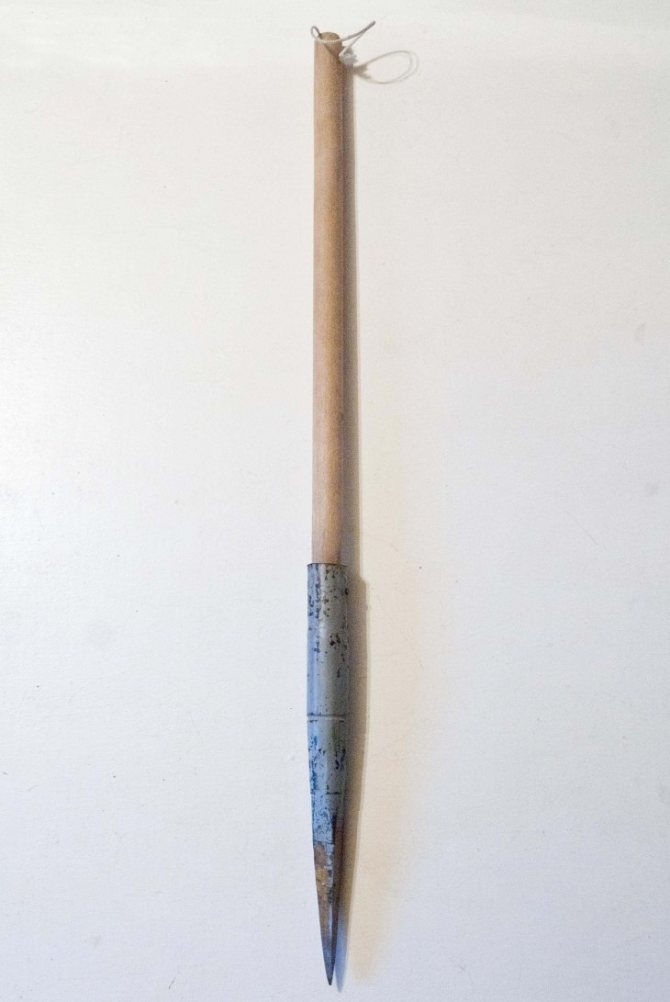
DIY ice pick
A self-made pick can not only be cheaper than a factory equivalent, but also be more convenient and durable to use. To make a high-quality tool for cutting holes with your own hands, you will need:
- well-drawn drawing;
- high-quality source material;
- necessary material resources - metalworking tools;
- theoretical knowledge and practical experience in working with metal.
Blueprints
To make an ice pick of exactly the model and size required in your case, you should initially make some calculations. Their results are transferred to paper on a scale indicating dimensions. Having a drawing at hand makes it much easier to maintain the required shape and size of the pick. If you do not have the opportunity to make the tool yourself, then according to the drawing you have drawn up, you can order an ice pick from a forge or metalworking shop. If the fisherman is not good at drawing, there is a simplified option - find a drawing of the most suitable ice pick on the Internet.
For thick ice, massive spear-shaped products with a long handle are better suited. This shape of the tip is more durable and, due to the small impact surface area, penetrates hard dry ice better. In terms of their operating principle and size, they are more similar to a regular crowbar, the only difference being that their upper part is made in the form of a wooden handle. They usually work while standing, thrusting the tip into the thickness of the ice. The length of the metal attachment of such an ice pick can be 30-40 cm with a handle length of up to a meter.
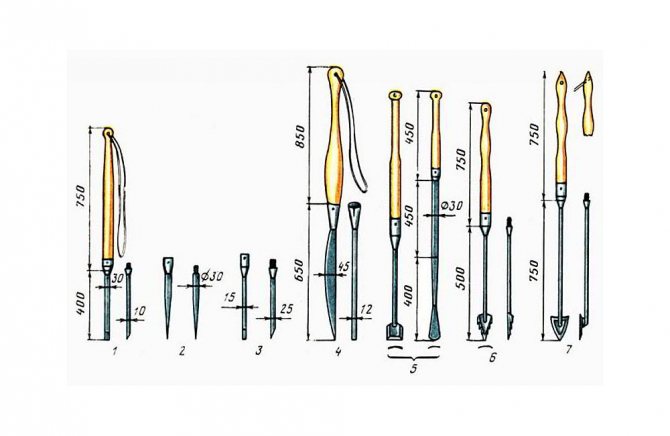
For thin ice, it is better to use small ice picks with less weight and size. We recommend chisel-shaped options with a metal nozzle length of 10-15 cm and a striking blade width of 3-5 cm. The smallest models in size and weight are used for clearing holes from ice formed in the cold. After drawing up a drawing of the most suitable pick, you can begin to select the appropriate material.
Material
The easiest part of the job when making a homemade pick is the wooden handle. Dense deciduous wood, such as birch or beech, is perfect for it. The easiest option is to take a spade cutting without knots and cut it to the desired length. It is usually selected based on the height of the fisherman. However, for ease of use, it is recommended to make the handle not straight, but with thickenings at the bottom and top, in order to minimize the risk of the tool slipping into the water.
The most labor-intensive and responsible part of the work is the manufacture of a cutting and piercing metal tip. It is usually made from a spring, a track pin, a chisel, or a file. Other parts cast from high carbon steel will also work. It is not recommended to use low-carbon steel for the nozzle due to its low rigidity. It is practically impossible to harden it at home, and after each hole you will have to spend time sharpening such a rawhide tool.
Tip
The tip is made by processing the original blank on a milling machine or by forging. Since not every angler has access to metalworking machines and has the skills to work on them, the most affordable way to make a metal tip with your own hands is to forge it. To do this you will need:
- a forge or gas welding machine for heating metal;
- sledgehammer, chisel, hammer with a chisel on the back side to give the workpiece the desired shape;
- an anvil, piece of rail, or other suitable forging surface;
- an emery machine or grinder for sharpening the edges of the tip.
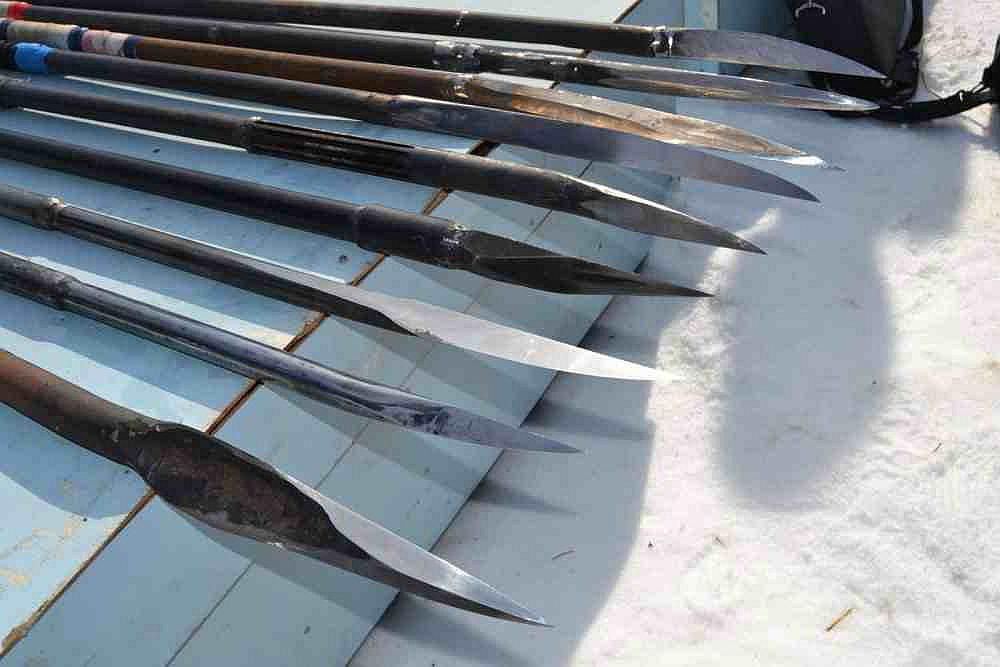
As an example, let's look at how to make a Yakut double-edged pick from a caterpillar track finger. First of all, the workpiece is heated in a forge or autogenous oven to the desired temperature, when it begins to glow yellow-orange. Next, while it is hot, use a sledgehammer to give the finger, which is round in cross-section, a rectangular shape. As the workpiece cools, when the bright orange color turns into dull red, it should be reheated. This makes the metal soft and pliable, and forging takes less effort and time.
After a rectangular block has been obtained instead of a cylindrical finger, it begins to be flattened at the end from two opposite edges. In this case, you should pull out the flat tip so that it gradually becomes thinner towards the end of the nozzle. The result should be a product whose configuration resembles a rounded leaf of a plant. After this, both rounded edges of the tip are processed using a chisel and sledgehammer to give them a straight shape. In the end, the result is a spear-shaped tip that perfectly combines both piercing and cutting abilities.
The next step is to harden the workpiece. To do this, the metal tip is again heated red-hot and lowered into cold water. It is even better to use machine oil instead of water, since it heats up more slowly from exposure to hot metal, and hardening becomes more effective. In a similar way, an attachment for an ice pick is forged from a spring or other suitable piece of metal. In the absence of a forge and gas welding, you can cut the workpiece using a grinder and then process it on an emery machine to give it the required shape and sharpness.
Sharpening angle
The last step in making a metal pick tip is sharpening it. For it to work more efficiently, the tip must be sharpened correctly. This procedure is performed differently for different models of tips. For a wedge-shaped pick, the sharpening angle is usually 10-15° to the vertical axis. Sharpening options are also available:
- Finnish, used for pick-picks, with an angle to the vertical of 20°;
- Kizlyar, when the tip is sharpened on both sides at an angle of 30°;
- Yakut - the tip configuration has a bevel in one direction at 20-30o.
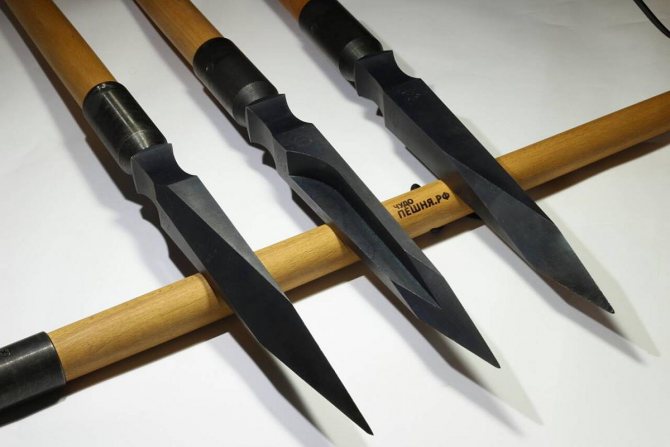
Primary sharpening of the nozzle is carried out on an emery machine or using a grinder. In this case, the correct angle of the blade or tip is set. The final stage of the procedure is performed manually, using a block. It also corrects the blade of the tip when fishing when it becomes dull during the process of chopping ice. To prevent the tip of the ice pick from becoming dull during transportation or storage, as well as for safety reasons, it must be covered with a sheath. You can make a sheath from two wooden planks covered with leather for flat tips, and from a piece of thick rubber tube or hose for cone-shaped ones.
Assembly
The last step in making your own pick is assembling the entire structure - connecting the wooden handle and the tip with the point. To do this, an adapter made from a pipe of suitable diameter is welded to the metal tip. The optimal length of the pipe cut into which the handle is inserted should be 25-30 cm. Attaching a wooden handle to a metal tip is similar to the process of attaching a handle to a shovel blade.
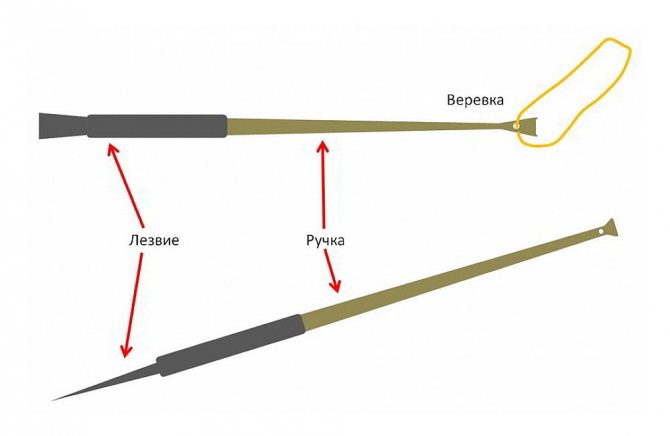
For a more durable fastening, 1-2 holes are made in the pipe using welding or a drill for self-tapping screws, which are screwed into the handle. Thanks to this method of fastening, you can make a multifunctional ice pick with interchangeable attachments that are most suitable for different weather conditions and types of ice. When going fishing, to replace the tip of the pick, you just need to unscrew the fixing screw and install a suitable type of attachment.
Estimated cost
The factory price for an ice fishing pole can be very different. The following facts influence its cost:
- metal alloy used;
- special wood that meets the requirements for increased strength and performance parameters;
- quality of work when performing the product.
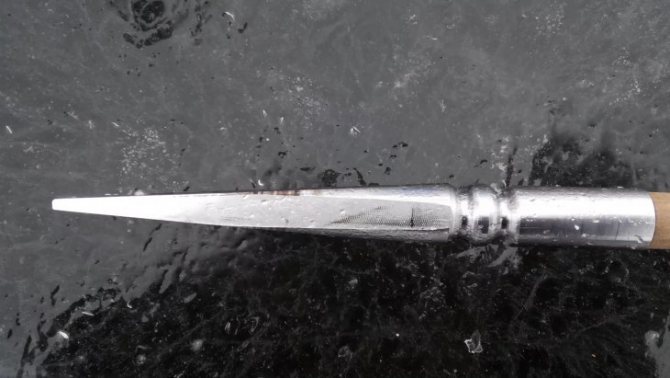
These are the main parameters that influence the pricing policy. It is clear that the brand of the company manufacturing them can be added to this.
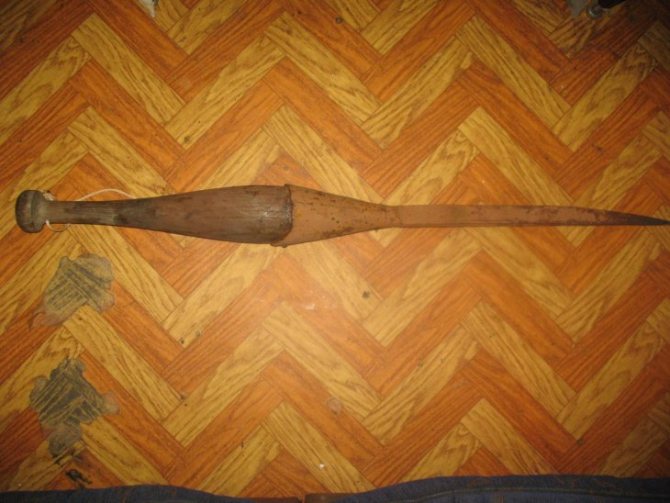
A budget option
The cheapest option is a homemade ice pick for winter fishing. In this case, a person receives a number of advantages:
- you can make a product to suit the characteristics of a specific person;
- the geometric configuration of the tip is selected in advance, capable of efficiently performing the assigned tasks;
- There is an opportunity to save significant money.
Thanks to this option, it is possible to safely move on the ice and punch holes of the required size.
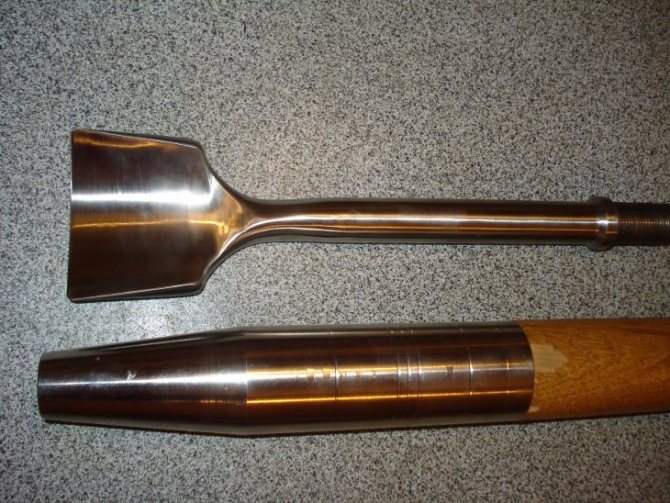
Best options
When deciding which is the best ice pick for winter fishing, you need to take into account the tasks for which it is intended.
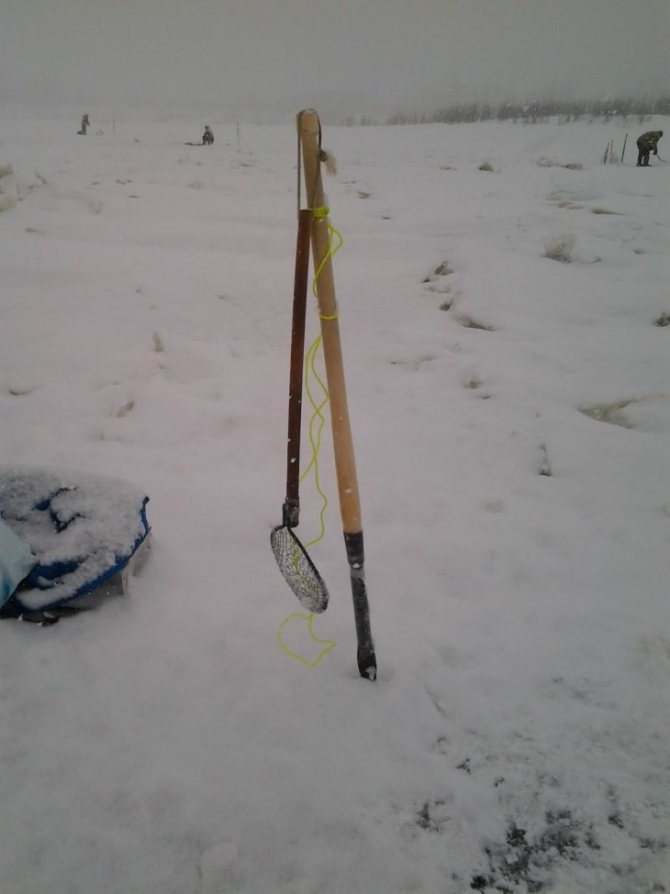
Avid fishermen have several product options at the same time:
- an ice pick weighing 2.5 kg is taken for walking on thin ice, in which case there is no need to wear a heavy analogue;
- a product weighing up to 4.5 kg is taken to work on thick ice;
- There are also different tips, because each of them is good for its own purposes.
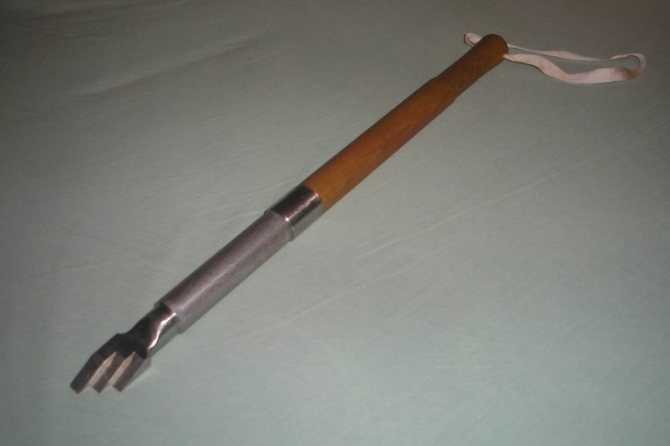
Thus, a person has a choice in his home arsenal, which greatly simplifies the solution of tasks.
Mini ice pick
For fishermen fishing on the girder, a mini-pick will be useful. With its help, you can clean the edges of the hole from the ice that forms, trim its edges if necessary, and scoop out ice crumbs. To make a mini-pick, various available materials are suitable: a piece of spring, long bolts, or a piece of water pipe. Using forging or simple turning, a trapezoid-shaped tip is made. The lower sharpened part is made 2-3 cm wide, and the upper part is 10-12 cm wide.

Punching a hole with an ice pick
Several holes are made in the nozzle by welding or using a metal drill for water drainage. Then it is welded to an adapter pipe, onto which a wooden handle of suitable length is mounted. Using such a tool, you can not only break up the ice that forms, but also scoop out pieces of ice from the hole.
The process of making an ice pick yourself is not that complicated and is quite accessible even at home. The main thing is to have the appropriate material, tools and skills to work with it.

